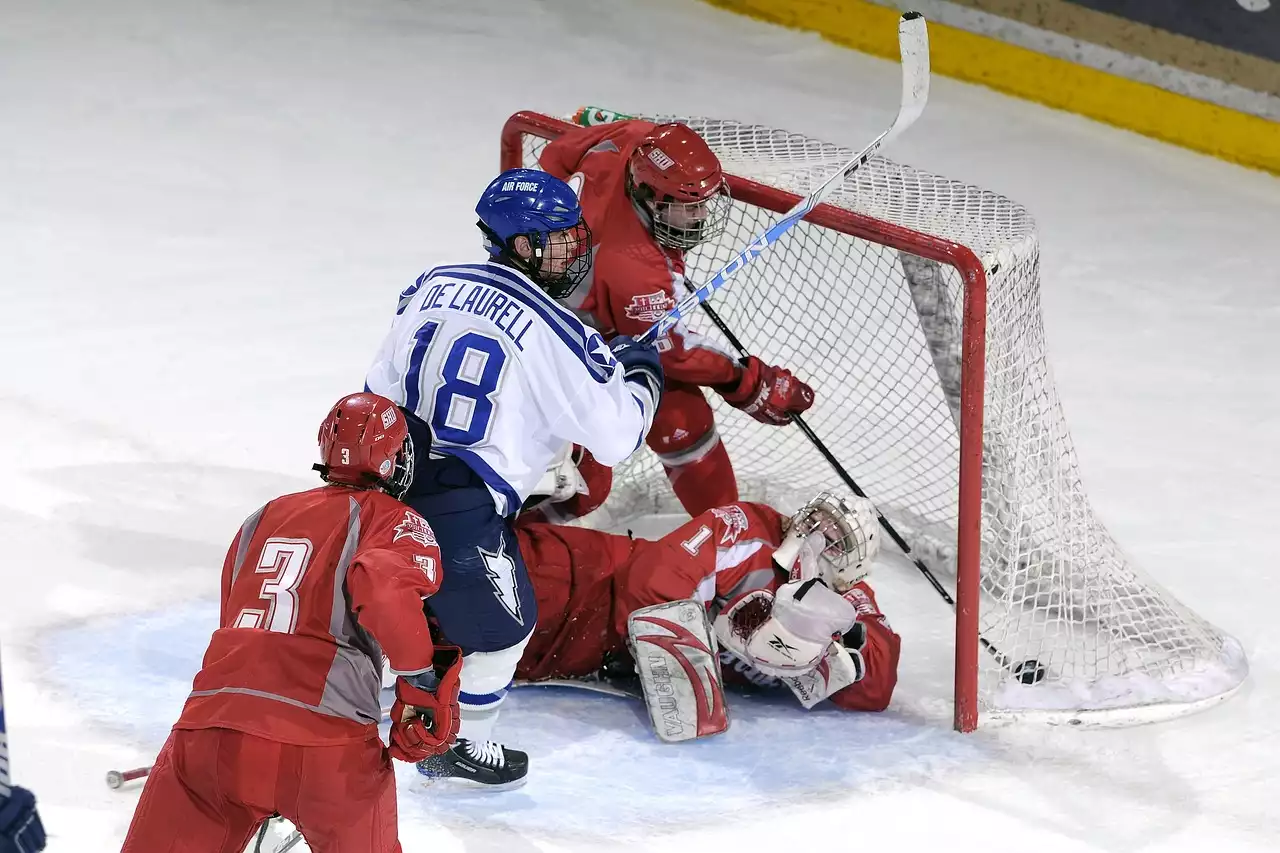Overview of NCAA College Hockey
NCAA college hockey is a fast-paced, high-intensity sport. It is divided into two divisions: Division I and Division III. Division I is the highest level of competition in the NCAA and consists of 61 teams. These teams are split into six conferences: Atlantic Hockey, Big Ten, ECAC Hockey, Hockey East, NCHC, and WCHA. Division III consists of more than 200 teams across seven conferences: CHC, ECAC West, MASCAC, MIAC, NCHA, NEHC, and SUNYAC.
College hockey teams compete for the NCAA Division I National Championship and the NCAA Division III National Championship, both of which are held annually in April. The NCAA also holds a Frozen Four, in which the top four Division I teams compete for the National Championship. In addition to the Division I and III championships, the NCAA also hosts the Division II National Championship, which is held every two years.
NCAA college hockey teams are also eligible to compete in the annual U.S. College Hockey Online (USCHO) National Poll. This poll is used to rank the top teams in the nation and is released at the start of each season.
Divisions and Teams in NCAA College Hockey
The NCAA is divided into two divisions: Division I and Division III. Division I is the highest level of competition in the NCAA and consists of 61 teams. These teams are split into six conferences: Atlantic Hockey, Big Ten, ECAC Hockey, Hockey East, NCHC, and WCHA. The divisions and conferences are further divided into four regions: East, Midwest, Northeast, and West.
Division III consists of more than 200 teams across seven conferences: CHC, ECAC West, MASCAC, MIAC, NCHA, NEHC, and SUNYAC. Each conference is divided into two or more regions, and teams compete for the Division III National Championship.
NCAA Rules and Regulations
The NCAA sets rules and regulations for all of its sports, including college hockey. These regulations cover everything from eligibility requirements to team and player conduct. The NCAA also sets regulations regarding recruiting, scholarships, equipment, and team budgets.
The NCAA also sets rules regarding the number of games each team can play, the length of the season, and the number of teams that can compete in the Frozen Four. In addition, the NCAA sets rules regarding the number of players on the roster, the size of the ice rink, the length of the game, and the type of equipment allowed.
History of NCAA College Hockey
College hockey has been a popular sport in the United States since the early 1900s. The first college hockey game was played in 1895 between Johns Hopkins and Yale. Since then, college hockey has grown to become one of the most popular sports in the United States.
In 1947, the NCAA began sanctioning college hockey as an official sport. The first NCAA Division I National Championship was held in 1948, and the first NCAA Division III National Championship was held in 1958. Since then, college hockey has grown to be one of the most popular sports in the United States.
The NCAA also holds the annual Frozen Four tournament, which features the top four teams in Division I. The Frozen Four is one of the most popular events in college hockey and is held in April.
Notable Events and Moments in NCAA College Hockey History
Over the years, there have been many memorable moments and events in NCAA college hockey history. Here are some of the most notable:
The first NCAA Division I National Championship was won by Rensselaer Polytechnic Institute in 1948.
In 1952, the NCAA instituted a rule that all Division I teams must have an African-American player on their roster.
In 1982, the NCAA instituted the Women's Frozen Four. This event is now held annually and is the only Division I tournament for women's hockey.
In 1984, the NCAA instituted a rule that all Division I teams must have a minimum of six players of the same gender on their roster.
In 1985, the first NCAA Division III National Championship was won by St. Lawrence University.
In 1989, the NCAA instituted the three-point system for Division I teams, which awards three points for a win, one point for a tie, and no points for a loss.
In 1992, the first Women's Frozen Four was won by the University of New Hampshire.
In 1998, the NCAA instituted a rule that all Division I teams must have a minimum of nine players of the same gender on their roster.
In 2004, the NCAA instituted a rule that all Division I teams must have a minimum of 12 players of the same gender on their roster.
NCAA College Hockey Records
The NCAA keeps track of a variety of records for college hockey, including wins, losses, and shutouts. The NCAA also keeps track of individual player records, such as goals, assists, and points. These records are kept for both Division I and Division III teams.
The NCAA also keeps track of team records, such as longest winning and losing streaks, most consecutive wins, and most consecutive losses. The NCAA also keeps track of records for individual players, such as most goals in a single season, most assists in a single season, and most points in a single season.
NCAA College Hockey Awards
The NCAA awards a variety of awards to recognize the best teams and players in college hockey. These awards include the Hobey Baker Award, which is given to the best player in college hockey each year; the Mike Richter Award, which is given to the best goaltender in college hockey each year; and the NCAA All-American Team, which is composed of the top players in each division. The NCAA also awards the NCAA Player of the Year Award to the best player in each division.
The NCAA also awards the NCAA Championship Trophy to the team that wins the NCAA Division I National Championship. This trophy is given to the winning team at the end of the season and is a symbol of their victory.









